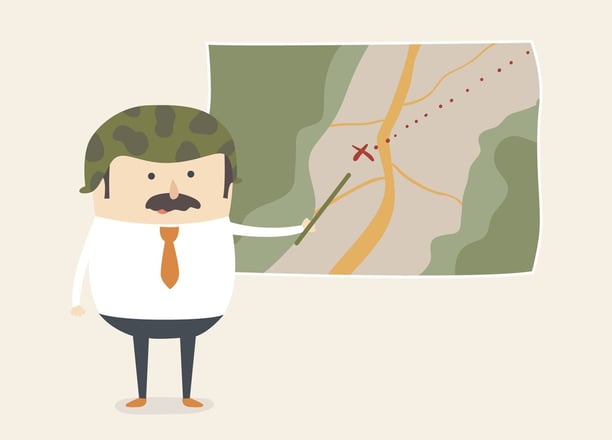Checkpoint Awareness
Be cautious of checkpoints. Be polite, comply with instructions, and avoid confrontations. Checkpoints are common in conflict zones or areas under strict control. They can be manned by military forces, police, or even unofficial groups. How you handle interactions at checkpoints can significantly affect your safety. The key is to remain calm, polite, and cooperative to avoid drawing unnecessary attention or escalating tensions.
STAY LOW AND MOVE SMARTLY
12/21/20243 min read
Checkpoint Awareness
Be cautious of checkpoints. Be polite, comply with instructions, and avoid confrontations. Checkpoints are common in conflict zones or areas under strict control. They can be manned by military forces, police, or even unofficial groups.
How you handle interactions at checkpoints can significantly affect your safety. The key is to remain calm, polite, and cooperative to avoid drawing unnecessary attention or escalating tensions.


1. Understand the Risks at Checkpoints
Checkpoints can be unpredictable. Those manning them might be armed, stressed, or wary of potential threats. Failing to act appropriately can lead to suspicion, delays, or even danger.
Potential Risks:
Miscommunication: Language barriers or misunderstandings can lead to unintended consequences.
Harassment: Some individuals at checkpoints may use their authority to intimidate or extort.
Escalation: Aggressive or confrontational behaviour can quickly escalate into violence.
Detainment: If you seem suspicious or uncooperative, you could be detained for questioning.
2. Be Cautious When Approaching Checkpoints
What to Do Before Reaching a Checkpoint:
Observe from a Distance: Look for signs of activity, armed personnel, or potential danger before approaching.
Minimize Attention: Avoid drawing unnecessary attention to yourself or your vehicle.
Prepare Documents: Have identification and any necessary permits ready for inspection.
Stay Calm: Take deep breaths to remain composed and reduce visible anxiety.
3. Be Polite and Compliant
Why Politeness Matters:
Builds Trust: A respectful tone and demeanour can reduce suspicion.
De-escalates Tension: Politeness helps defuse any hostility or defensiveness from those at the checkpoint.
Facilitates Quick Passage: Complying with instructions ensures smoother interactions.
How to Be Polite:
Greet Respectfully: Use simple greetings appropriate to the local culture or situation.
Maintain Eye Contact: Show attentiveness but avoid staring aggressively.
Speak Calmly: Use a neutral tone and avoid raising your voice.
Use Positive Body Language: Keep your hands visible, avoid sudden movements, and adopt a relaxed posture.
4. Comply with Instructions
Why Compliance is Essential:
Reduces Suspicion: Following instructions shows you have nothing to hide.
Minimizes Delays: Arguing or resisting can prolong your time at the checkpoint.
Prevents Escalation: Disobedience can provoke aggressive reactions from those in charge.
How to Comply:
Follow Orders Immediately: If asked to show identification, step out of a vehicle, or open a bag, do so calmly.
Answer Questions Honestly: Provide clear and truthful answers without volunteering unnecessary details.
Stay Still: Avoid making unnecessary movements that might appear threatening.
5. Avoid Confrontations
Why Avoid Confrontations:
Power Imbalance: Those manning the checkpoint likely have weapons and authority. Confrontation could lead to harm.
Unpredictable Reactions: Stress or paranoia among guards can lead to overreactions.
Safety Comes First: Avoiding conflict ensures the safety of yourself and anyone travelling with you.
How to Prevent Confrontation:
Stay Neutral: Avoid expressing opinions about the situation, politics, or other sensitive topics.
Do Not Argue: Even if you feel mistreated, prioritize safety over proving a point.
Respect Authority: Acknowledge the role of the individuals at the checkpoint, regardless of your personal feelings.
6. Tips for Navigating Checkpoints Safely
Travel Light: Carry minimal belongings to avoid extensive searches.
Have Essential Documents Ready: Keep identification and permits in an easily accessible location.
Avoid Suspicious Items: Do not carry items that could raise suspicion, such as large sums of money or weapons.
Stay Focused: Avoid distractions like using your phone or talking excessively.
Know Local Protocols: Familiarize yourself with common checkpoint procedures in the area.
What to Avoid:
Displaying Nervousness: This can raise suspicion.
Acting Rushed: Appearing impatient or hurried may make you seem suspicious.
Provoking Guards: Avoid any behaviour that could be perceived as mocking, sarcastic, or threatening.
Caution: Approach checkpoints carefully and assess the situation.
Politeness: Treat those at the checkpoint respectfully to build trust.
Compliance: Follow instructions to ensure smooth and safe passage.
Avoid Confrontation: Prioritize safety by staying calm and neutral, even in tense situations.
Handling checkpoints with care and composure can make a critical difference in ensuring your safety and avoiding unnecessary complications in conflict zones.






